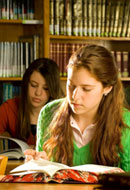A Jewish Renaissance?

In recent years Israel has become a vast open-air laboratory for experiments in Judaism, re-fashioning rituals, reading old texts through new lenses, scrambling and fracturing familiar dichotomies between secular and religious. Secular yeshivot, mainstream performers singing medieval Hebrew hymns, non-denominational "prayer communities" in hip Tel Aviv, kabbalistic therapy movements, Judaism festivals on once-socialist kibbutzim—something is going on here, but what?
Yair Sheleg, a long-time contributor to Haaretz and a fellow of the Israel Democracy Institute, has for years been training a journalist's eye and insider's knowledge on Israeli religious life. An earlier book, The New Orthodox (Hebrew, 2000), documented the ways in which both mainstream religious Zionists and the ultra-Orthodox were adapting to secular Israeli life and culture. Now, in From Old Hebrew to New Jew: The Jewish Renaissance in Israeli Society, a follow-up Hebrew volume, Sheleg deftly explores the other side of the ledger: the not easily classifiable groups and individuals vigorously exploring Judaism outside the structure of the religious establishment and its institutions.
The political hegemony of Labor Zionism has been in dreary decline since the 1970s. No less consequential, and perhaps more so, is the steady dissolution of the social and cultural ethos with which Labor built the state's society and culture. That ethos—statist, collectivist, secularist (with a place set aside for domesticated religious Zionism), and unmistakably Ashkenazi—registered extraordinary accomplishments, but ultimately proved no match for privatization, globalization, the emergence of identity politics, and the enduring human need for transcendence. Sensing that the Zionist revolution against traditional Judaism had run its course, new circles, small at first, inaugurated a revolution of their own: a return not so much to tradition as to Judaism's cultural treasures on new terms.
The backbone was study. The late 1980s saw the founding of two pioneering study centers (batei midrash): Midreshet Oranim, affiliated with the kibbutz movement, and Elul in Jerusalem. In both, religious and secular joined together to read classical and modern texts in yeshiva style but without a yeshiva's claim to traditional authority. Interestingly, they made a point of studying Talmud, trying to reach for wider Jewish horizons than those embraced by classical Zionism, with its leapfrogging of Diaspora history in favor of the Bible. The Zionist thinkers with whom they engaged—H.N. Bialik, A.D. Gordon, H. Brenner, B. Katznelson, A.I. Kook—were searchers themselves, swinging on the hinge of exile and revolution, despair and redemption.
By now there are dozens of alternative study centers, and their style has been adopted by a number of other institutions from yeshivot to paramilitary colleges. Meanwhile, as Sheleg details, large numbers of Israelis have also been swept up by non-institutional forms of spirituality: popular magic and serious study of kabbalah, New Age Judaism, Judaic psychology, Carlebach-inflected music, Chabad messianism, "HinJew" and "BuJu" syncretism, the ecstatic ups and downs of Bratslav Hasidism.
Throughout, Sheleg distinguishes between the cultural and the spiritual dimensions of this Jewish renaissance—between, in his words, "those searching for Judaism and those searching for God." The former cohort is more Ashkenazi, more middle-class, and more attuned to the country's cultural elites. Among the latter, one finds more Sephardim, more Russians, and, interestingly, more of the newly rich. Perhaps paradoxically, or perhaps not, those in the first group seek to influence their society and the world around them, while those in the second are chiefly concerned with their own spiritual fulfillment. Another paradox: the cultural quest is a more local drama, a search for a lost center with no easy or obvious road back, while the spiritual quest is in many ways part of a global trend.
What will the future hold? Materially, the cultural movement is still very dependent on American philanthropists, while the spiritual movement is a tempting moneymaker for shysters. Morally, Sheleg sees large potential pitfalls for each, with the cultural renaissance at risk of devolving into an ethereal, elitist aestheticism, and the spiritual revival at risk of winding up in religious dogmatism, hucksterism, and atavistic politics. Signs of degeneration are already visible.
But, in the meantime, what about the greater Israeli public? Can either of these currents affect it, and for the better? Both are up against the deadening forces of the mass media, cultural weariness, the inert categories of "religious" and "secular," and a calcified religious establishment. But Sheleg also sees hopeful possibilities, should the Jewish renaissance succeed in presenting genuine and compelling alternatives to the pallid, dispiriting brew on offer in mainstream culture. This may be wishful thinking. Still, the 19th and 20th centuries saw several Jewish revolutions, for worse but also for better. Is it too much to hope for another, revivifying, one in the 21st?
I have to say that I think the comparisons to the Reformation, as well as to the Reform and Conservative movements are not entirely on point here. Both those historical developments were attempts to supplant one religious establishment with another. Here we are dealing with something else - a range of activities of cultural and spiritual revival which, whatever they're doing, are not trying to establish formal religious denominations. Reform and Conservative Judaism have largely failed in Israel not only because of opposition by the Rabbinate, but in no small part because they haven't been able to express themselves in ways that are meaningful to the people here. Here we see that some new forms of Israeli religious and spiritual expression are bringing themselves into being. And it certainly will be interesting to watch.
Thank you for reiterating the reformation in lay woman's terms. Clarifying religious views is very important to others who don't understand. Representing it with art, song, theater etc. has been a form of spiritual expression before any written language. This form of expression will make the people within the denomination more approachable. It would allow myself,(a very reformed Jew), to be less intimidated because I'd be able to get a clearer view into their perspective of Judaism.
Comments are closed for this article.




